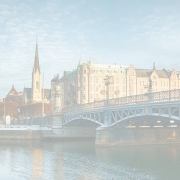Sweden’s wine market is very much one of solid success – but one whose growth over the next few years may well be confined to ‘hot’ areas rather than category-wide.
Sweden has all the hallmarks of a mature market: good – and relatively stable brand awareness, a loyal base of regular consumers and a willingness to trade up. New trends can also ‘catch fire’, thanks in large part to the ubiquity of Systembolaget, the state-owned monopoly retailer, and its ability to implement thorough and consistent merchandising strategies.
Yet there are also causes for concern – most notably signs that the wine market is close to peaking – or has already peaked – and that its most regular consumers are becoming more conservative and less experimental.
Sweden has a reasonably high wine engagement. Just under half the population (3.8m people) are classified as regular wine drinkers – meaning they drink the product at least once a month. This is half a million fewer than in 2017, though the latter bad news is somewhat mitigated by the fact that the number of those drinking wine once a week or more has broadly held steady over the same period. Thus, a higher percentage of the overall total – 66% – now drink wine on an at-least weekly basis.
Overall consumption has, perhaps unsurprisingly, followed the number of total drinkers, showing a gentle decline in 2021, compared to 2020, from 25.1m cases to 24.9m. This is hardly a cause for panic and is, admittedly, comparing two Covid-affected years. But it’s worth noting that both beer and spirits grew over the same period.
Another key element is the strong influence of Boomers. The over-55s account for just over half of all the wine drunk in Sweden. They are a loyal cohort, and the group most likely to drink wine on a daily or weekly basis. But they are also more price-sensitive than other demographics.
And since half of them ‘know what they like and tend to stick to what they know’, this can make it harder for new brands, regions, styles or formats to break in.
Nonetheless, spend per-bottle in the off-trade has risen 4-6% since 2019. This may be inflation-driven, or it may be genuine premiumisation. Certainly, retailers reported more big-ticket (€50+) purchases during Covid, so some of this ‘affordable treating’ behaviour may be continuing. Millennials (aged 25-39) are likely to be driving much of the uptick. As a group they consistently spend 5-10% more per bottle than other demographics, whatever the occasion for which they are buying it.
The question, perhaps, is whether this premiumisation trend can survive economic pressures. Swedes are currently ‘confident in their ability to manage their finances’ going forward (a whopping plus net 60% of respondents), but shoppers are also prudently seeking out more special offers and spending less on everyday goods. Few expect to be better off in a year’s time.
If a degree of caution is understandable both among Swedish consumers and the wine industry, one area, at least, can view the future with confidence. Sparkling wine – specifically more affordable sparkling wine, and even more specifically cava and prosecco – are booming.
Champagne might be the overall wine style that regular wine drinkers are most familiar with, but prosecco has a far higher rate of conversion to sale (30% as against 18%). Cava, at 25%, is not far behind, putting it joint second with the once-unassailable Rioja, whose influence is still powerful, but diminishing.
This is part of a consistent trend, with consumption of red wines declining and prosecco in robust growth. Half of all Swedish wine drinkers have drunk a bottle of the Italian sparkler in the last year, whereas the number for reds has dropped from 90% in 2019 to 83%.
The move towards lighter and sparkling wines and away from fuller-bodied reds is hurting the new world producing countries. Chile, South Africa and Australia are already showing negative growth compared to 2019, and the latest Wine Intelligence report suggests that all three (plus Argentina) will be selling less wine in the country over the next five years.
Portugal – already putting in a strong showing at entry level and described by one importer as ‘offering very good, affordable quality’ looks set to cash in.
Another area of likely growth is organic wine. According to the Wine Intelligence Global Opportunity Index, Sweden ranks second (behind only China) in terms of its potential. In this, it benefits not just from the health-conscious and ethical standards among the population as a whole, but also from the fact that the country’s biggest retailer is government-run.
Over 85% of all wine in Swedish retail is sold through the Systembolaget, and the latter has made organic a key priority. Around 80% of Swedish wine drinkers are aware of organic wine, and over 40% bought at least one bottle last year. With a receptive population and the state pushing it, organic wine sales are almost certain to increase going forward.
Consistent and well-established, Sweden’s wine market seems to have survived Covid largely unscathed. There are small pockets of excitement, scope for niched areas of growth, and a few early causes for mild concern. There are few reasons to panic, and few to break out a bottle of champagne – but a cautiously celebratory and well-priced bottle of prosecco could be just the thing.
You may also be interested in reading:
- Why has our relationship with wine changed in the Covid-era?
- Which key macro factors are driving the global wine industry in 2021?
- Millennials drive the sparkling wine category




Leave a Reply
Want to join the discussion?Feel free to contribute!